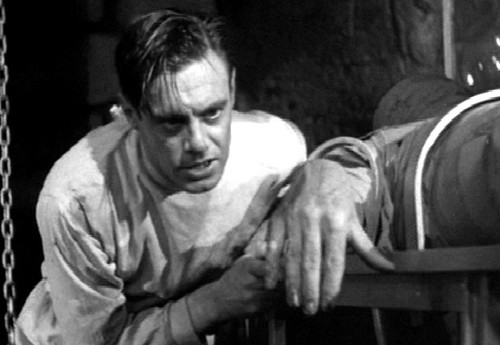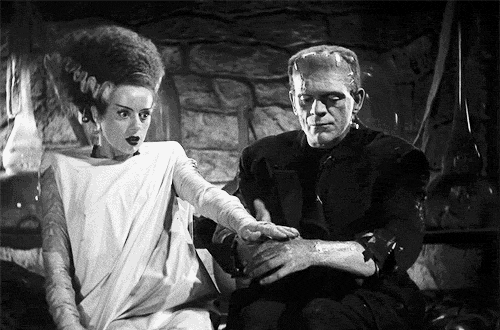"Imagine yourself standing by the wreckage of the mill. The fire is dying down. Soon the bare skeleton of the building will be visible, the gaunt rafters against the sky" explains Elsa Lanchester's Mary Shelley, setting the scene for one of the few most successful sequels, "The Bride of Frankenstein." Shot in 46 days at $400,000 and by 1943, earning $2 million in the box office, the sequel proves to be just as impactful, if not more, in the Universal horror franchise and as a stand-alone film.
Ironically enough, director James Whale used the possibility of a sequel to his advantage. Persuading Universal to let him direct 1934's "One More River" in return for a second "Frankenstein," Whale was not enthusiastic to make the film. "According to a studio publicist, Whale and Universal's studio psychiatrist decided "the Monster would have the mental age of a ten-year old boy and the emotional age of a lad of fifteen" ("The Bride of Frankenstein | Project Gutenberg Central - eBooks") even as script writer John L. Balderston attempted to create a continuation of Mary Shelley's iconic novel in film form. The only thing that remains from this script is the prologue based on the fated weekend at Lake Geneva between Lord Byron and the Shelleys.
There are clear differences in the four year gap of recreating that same night when The Creature goes down in flames with The Windmill laboratory. With the decision to make the monster speak, the bridgework in Karloff's mouth to give his cheeks a sunken appearance was taken out, allowing his face to look much rounder than in the 1931 film. Even makeup artist Jack Pierce purposefully attended to the details of displaying healing scars from the fire. The very thought of having to speak dialogue disappointed the English actor, which would eventually lead to what he called a "monster clambake," believing the combinations of Universal horror characters "ridiculous and said so" according to an interview with Louis Berg of the LA Times (1946). In the 1935 film, the still relatively "young" creature discovers friendship as his creator still wages war with God, creating a bride not out of demand (like in the novel), but in being manipulated by the magnificent Ernest Thesiger ("The Old Dark House," ""The Robe") as Dr. Pretorius.
"If the first one was about the essential loneliness of a man, a Miltonian episode about being thrust into a world that you didn't create and didn't understand, then the second one is the absolute compulsion for
Elsa Lanchester is magnificent in her movement, with much thanks to consistent homework of hissing like swans and jerking her head back and forth according to camera angle, much in the similar vein of Brigitte Helm as the Robot Maria in the Weimar classic "Metropolis" (1927). But with little to do and with the film titled in her (and the
Notable Links
Missed in History: Elsa Lanchester, Part 1 | Stuff You Missed in History Class
Missed in History: Elsa Lanchester, Part 2 | Stuff You Missed in History Class








No comments:
Post a Comment